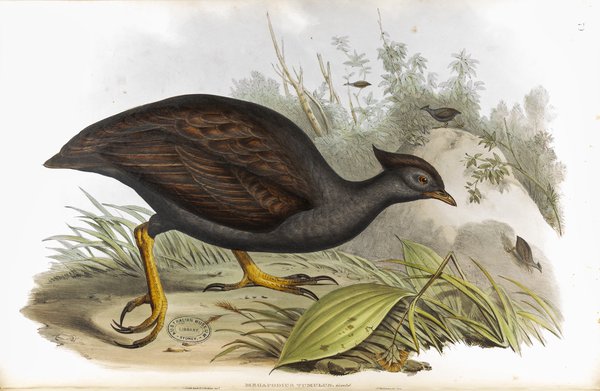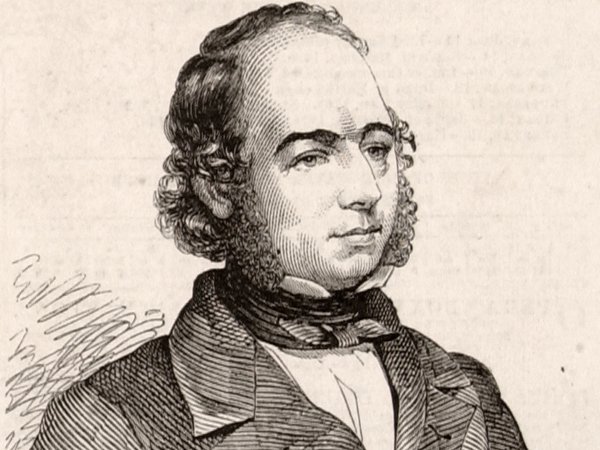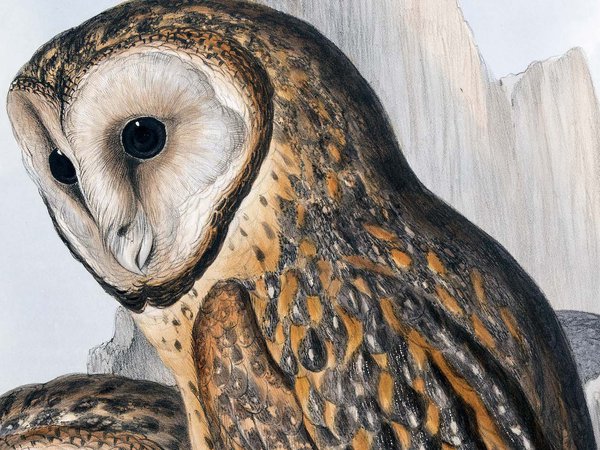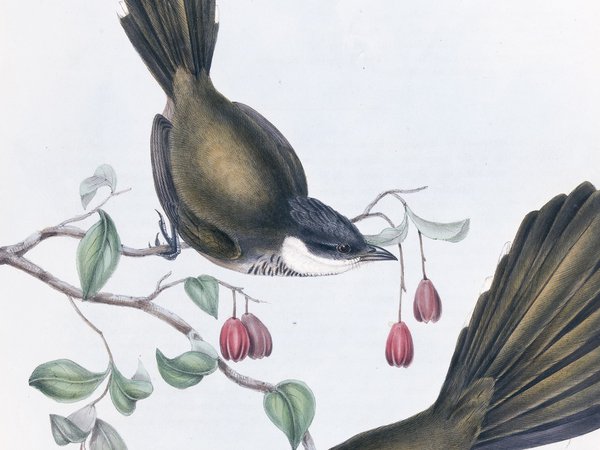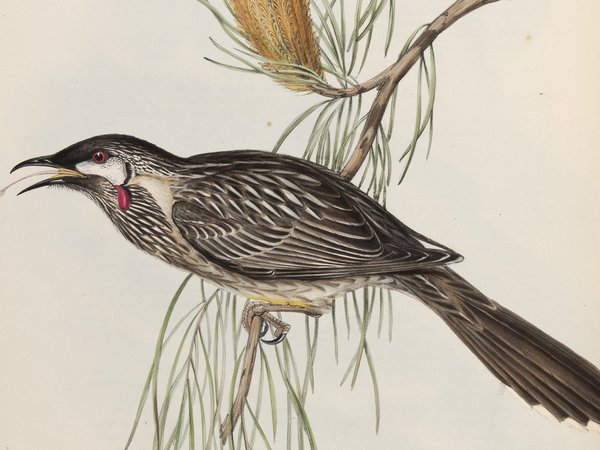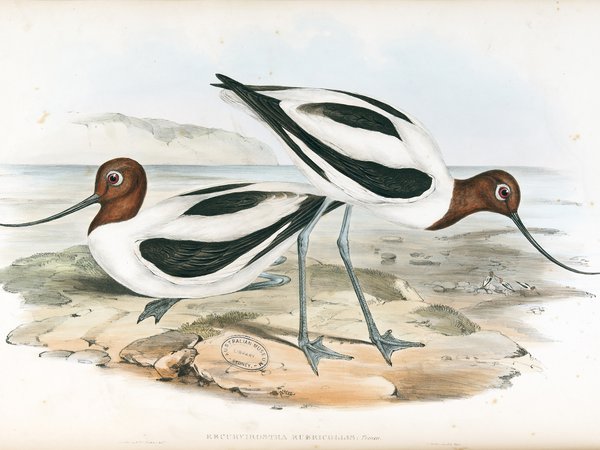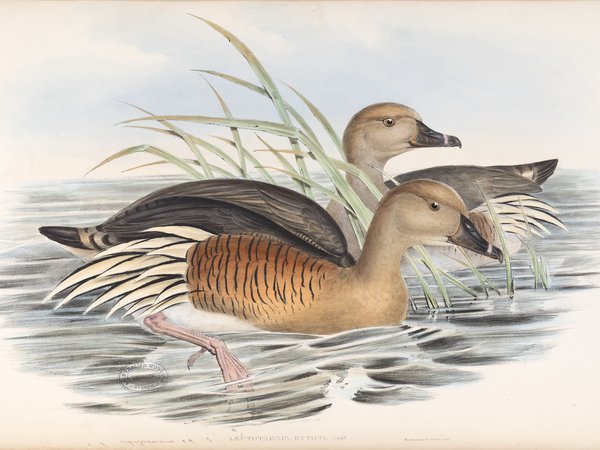John and Elizabeth Gould
John Gould and his wife Elizabeth Gould arrived in Australia in 1838 and spent over a year drawing, collecting and writing about the birds they found.


John Gould’s The Birds of Australia is widely recognised as the first comprehensive scientific survey of Australian bird life. Published in seven volumes between 1840 - 1848, The Birds of Australia features over 600 plates of hand-coloured lithographs created by a team of artists, accompanied by vivid descriptions of Australian birds in their natural habitat.
Considered by many to be the greatest accomplishment of English ornithologist John Gould, The Birds of Australia remains widely celebrated for the beauty and accuracy of its coloured lithographs, created under Gould’s watch by a team of artists including John Gould’s wife, Elizabeth Gould, Henry Constantine Richter, John Gilbert, Benjamin Waterhouse Hawkins, and Edward Lear. Published in parts to paying subscribers, only 250 copies were ever published.

At the time of its publication, Australia’s birdlife was relatively unknown to Europeans. Rather than relying on collected specimens available in England, Gould raised funds from his subscribers to travel in person to Australia, experiencing Australia’s bird life ‘in the field’. Joined by his artist wife Elizabeth and eldest son John Henry, Gould and his team arrived in Australia in September 1838 and spent the next 18 months travelling across Tasmania, South Australia and New South Wales documenting and collecting birds in their natural habitat.
The expeditions were supported by First Nations guides, who Gould befriended and made efforts to learn from. Unlike many colonial scientists of the era, Gould frequently credits the support of his guides Natty and Jemmy in his writing, and made reference to the Aboriginal names for the birds he collected, many of which remain in use today.
Gould and the Australian Museum
The Australian Museum (AM) was barely a decade old when John and Elizabeth Gould arrived in Sydney in February, 1839. The AM was seen as a colonial outpost of the British scientific establishment, and the AM’s new curator Dr George Bennett (who knew of Gould through his London contacts) welcomed Gould to the fledgling museum. For the next two years, the Goulds stayed with Bennett whenever they were in Sydney.
John Gould used the AM’s small collection of birds to further familiarise himself with Australia’s birdlife before he and Elizabeth headed into the field to collect their own specimens. A number of the museum’s specimens are mentioned in The Birds of Australia. One species, Bourke’s Grass-Parakeet, was so difficult to obtain that Gould resorted to describing and illustrating the two specimens from the AM collection.
Bennett resigned as curator in 1841, but remained closely tied to the Australian Museum for the rest of his life, and his friendship with Gould ensured an ongoing relationship with the museum. Other AM curators also exchanged correspondence and specimens with Gould over the next decades, as well as purchasing almost all of of his publications for the AM’s Library.

The Birds of Australia in seven volumes by John Gould.
Image: Leone Lemmer © Australian Museum Research LibraryWho was John Gould?

John Gould (1804-1881) was a 19th-century businessman, publisher and obsessive bird collector who left a lasting legacy in the world of ornithology with his folio volumes of superb colour-plated illustrations of birds, including many previously unknown Australian bird species.
Gould's international group of specimen collectors, artists and administrative agents helped him to create over half a million individual hand-coloured plates, despite the fact that Gould himself never finished a single picture. Among the many talented artists and lithographers who worked with Gould were his wife Elizabeth, Josef Wolf, Henry Constantine Richter, and William Matthew Hart.
Born in Lyme Regis in Dorset on 14 September 1804, John Gould developed a keen interest in natural history during his early years there and at Stoke Hill near Surrey. At the age of 14, he became an apprentice to the head gardener at Kew and developed a keen interest in ornithology.
John Gould started his own taxidermy business in London at the age of 21 and quickly became successful. In 1828, Gould was appointed Curator and Preserver to the Museum of the Zoological Society of London. His true ambition was to become a naturalist and publish an illustrated work on birds previously un-described in print.
With his wife Elizabeth's artistic talent and scientific contacts through his work at the Zoological Society, he was able to complete his first illustrated book, A Century of Birds of the Himalaya Mountains, in 1832. He then went on to publish The Birds of Europe and A Monograph of Toucans, both illustrated by Elizabeth Gould and artist Edward Lear.
Elizabeth Gould

Elizabeth Gould was born in Ramsgate, Kent in 1804 and was the only surviving daughter of middle-class parents Nicholas Coxen and Elizabeth Tomkins. Elizabeth's education was typical of the time and included subjects such as languages, music, and art, with a focus on drawing and needlework. She later became a governess for the King’s Proctor, William Rothery, but found the work dull and lonely.
Elizabeth eventually married John Gould, Curator and Taxidermist at the Zoological Society, in 1829, and they had eight children together. Elizabeth was a talented artist, and John used her skills to illustrate his publications. She created illustrations for many publications, including John Gould's Monograph of the Ramphastidae and Monograph of the Trogons, as well as 50 plates for the second volume Birds of Charles Darwin's Voyage of the H.M.S. Beagle. Elizabeth's artistic style developed under the guidance of Edward Lear, becoming more fluid and lifelike.
I find amusement and employment in drawing some of the plants of the colony, which will help to render the work on Birds of Australia more interesting... I trust we shall be enabled to make our contemplated work of sufficient interest to ensure it a good sale.
Elizabeth Gould died at the age of 37 from puerperal fever, just a year after returning to England from Australia. John Gould, her husband, was devastated by her loss, and although he found new artists to work with, he never remarried.
The Birds of Australia, which was completed eight years after her death, was intended to be fully illustrated by Elizabeth, but she only produced 84 of the nearly 680 plates, with the rest completed by Henry Constantine Richter. John praised Elizabeth's work in the introduction to the book and dedicated the Gouldian Finch to her, naming it Amadina gouldiae in her honor.
Voyage to Australia
In 1838, John Gould accompanied by his wife Elizabeth Gould, eldest son John Henry and his collector John Gilbert, embarked on a voyage to Australia to collect data on The Birds of Australia. While John was in the field, the then pregnant Elizabeth prepared sketches and awaited the birth of their son, Franklin Tasman.
Journey into NSW
In August 1839, the Goulds arrived in Sydney from Hobart and in September travelled to Newcastle before basing themselves at Yarrundi, near Scone.
John Gould made several trips to Sydney, staying with Australian Museum curator George Bennett. Gould collected 800 bird specimens and other items, making notes on them and their habitats. Gould and his family departed Australia in April 1840 to commence The Birds of Australia publication.

Left Maitland, passing over undulating country of beautiful park like scenery. Indeed this part of the country resembles for miles a succession of parks thickly dotted with tall slender trees of the Eucalypti kind and the ground covered in a luxuriant verdure where during the past season not a blade of grass was to be seen.
Discover The Birds of Australia: in seven volumes
-
The Birds of Australia: in seven volumes 01
Year: 1848
Place published: London -
The Birds of Australia: in seven volumes 02
Year: 1848
Place published: London -
The Birds of Australia: in seven volumes 03
Year: 1848
Place published: London -
The Birds of Australia: in seven volumes 04
Year: 1848
Place published: London -
The Birds of Australia: in seven volumes 05
Year: 1848
Place published: London -
The Birds of Australia: in seven volumes 06
Year: 1848
Place published: London -
The Birds of Australia: in seven volumes 07
Year: 1848
Place published: London



